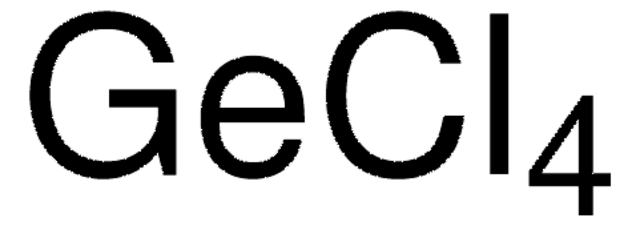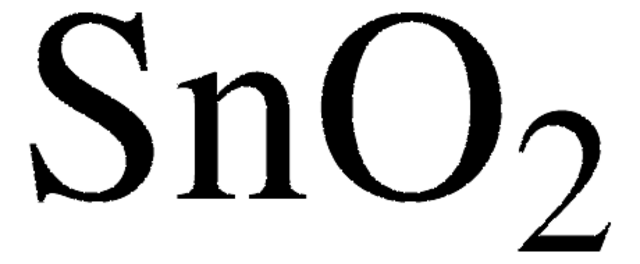199478
Germanium(IV) oxide
(crystalline powder), 99.998% trace metals basis
Synonym(s):
Germanium dioxide
About This Item
Recommended Products
Assay
99.998% trace metals basis
form
(crystalline powder)
mp
>400 °C (lit.)
density
4.23 g/cm3
application(s)
battery manufacturing
SMILES string
O=[Ge]=O
InChI
1S/GeO2/c2-1-3
InChI key
YBMRDBCBODYGJE-UHFFFAOYSA-N
Looking for similar products? Visit Product Comparison Guide
Application
- To prepare glasses for nuclear radiation shielding and ultra-broadband amplification. For example, germanium and bismuth oxide glasses.
- As a precursor to synthesize GeO2/TiO2 nanocomposites that can be used for the photocatalysis of organic pollutants.
- As an anode material for lithium-ion batteries due to its high lithium storage capacity, thermostability, and large volume expansion during the charge–discharge process.
Signal Word
Warning
Hazard Statements
Hazard Classifications
Acute Tox. 4 Oral
Storage Class Code
11 - Combustible Solids
WGK
WGK 3
Flash Point(F)
Not applicable
Flash Point(C)
Not applicable
Personal Protective Equipment
Certificates of Analysis (COA)
Search for Certificates of Analysis (COA) by entering the products Lot/Batch Number. Lot and Batch Numbers can be found on a product’s label following the words ‘Lot’ or ‘Batch’.
Already Own This Product?
Find documentation for the products that you have recently purchased in the Document Library.
Customers Also Viewed
Our team of scientists has experience in all areas of research including Life Science, Material Science, Chemical Synthesis, Chromatography, Analytical and many others.
Contact Technical Service










